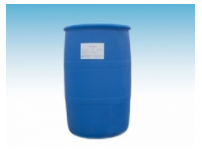In addition to being used as antistatic agent and smoothing agent, anionic surfactant can also be used as wetting agent. Succinate sulfonate is a good wetting agent. Adding this kind of surfactant into the oil agent can improve the affinity of the oil agent to the fiber, so that the oil can be evenly applied, and the oil application rate (o.p.u) can be increased as required. A series of products can also be produced with different carbon chains of R group and different EO number. However, the commercial penetrant ot (aerosol OT) is commonly used. The surface activity of OT is still strong, and its interface ability to mineral oil can reach 5.86 (mnm-1) at 0.1% concentration. However, it should be noted that when the product is mixed with other ionic and non-ionic surfactants, it is easy to make the mixture unstable, so in practical application, it should not be added as much as possible on the basis of achieving the osmotic wetting ability. Or it can be used together with other non-ionic surfactants with strong wetting ability to meet the requirements of oil agent function.

By adding antistatic agent into the oiling agent, the phenomenon of charged fiber can be overcome, which can eliminate the phenomena of wool, bulkiness, broken ends, winding roller, under cotton net and so on in the process of miscellaneous spinning, drafting and spinning. Apk has a good antistatic effect, especially in the case of high humidity. Antistatic properties are affected by concentration factors in APK:
1) The effect of APK alkyl carbon number on antistatic performance: the increase of alkyl carbon number, the increase of hydrophobic group, the decrease of polar group, the decrease of hygroscopicity, the increase of static charge accumulation and the decrease of antistatic effect.
2) The effect of APK concentration (m) on anti-static: generally, the higher m, the better anti-static effect. For example, the antistatic effect of c18pk is worse than that of c12pk, but the difference decreases with the increase of M.
3) The influence of the ratio of monodiesters in APK on the antistatic property: in the preparation of APK, different proportions of monodiesters are produced due to the change of process conditions. Because APK in monoester contains two hydroxyl Sylvites, while APK in diester only contains one hydroxyl sylvite, the former is obviously more hygroscopic than the latter, while the static charge accumulation is less, and the antistatic performance is strong.
The existence of silicon in aqueous solution indicates that the silica sol has the possibility of hydrogen bonding with the active group on the collagen, and the hydroxyl group on the silica sol may also form a coordination bond with the inorganic metal tanning agent. This idea provides a good way to replace traditional chrome tanning. Secondly, soluble silicate (water glass) has similar alkalinity to lime after hydrolysis, that is to say, it is possible to take the place of lime for liming and make the collagen fiber disperse well. And water glass is a completely pollution-free compound, which can solve the problem of lime pollution in the process of Liming. Thirdly, silicate (commonly used water glass) is a kind of salt, which can also reduce the moisture content in the skin after being mixed evenly with the original skin. The advantages of this method lie in that on the one hand, it can reduce the amount of neutral salt, make the load of TDS in the soaking liquid drop sharply, and avoid the salinization of the land; on the other hand, the silicate contained in the soaking liquid has no harm to the land and can be used for the irrigation of crops.